Genre: Action Developer: Psygnosis Publisher: Electronic Arts Players: 1 Released: 1992
For a while, the Genesis was on the receiving end of quite a few PC and Amiga ports from Electronic Arts. Some were better than others, but at least EA was giving Genesis owners a taste of the computer gaming world at that time. Among these titles, was a port of the Traveller’s Tales Amiga game, Leander. Retitled Galahad, EA released it in The States without much in the way of hoopla. Did their efforts yield a game worth owning? Read on.
You take on the role of Galahad, son of Lancelot. He has been charged with the duty to retrieve various bits of treasure, and rescue Princess Lucanna, both of which were taken by the evil wizard Miragorn in an attempt to get King Aurthur to come to him. You must venture across many lands to Tower Tarr where Miragorn is waiting, find the treasures, defeat the wizard, and bring the princess home safely.
Past computer-to-Genesis ports haven’t always fared too well graphically. However, Galahad makes the transition in fine shape. While the heavy amount of gradients from the Amiga backgrounds are gone, the newly designed backgrounds look good, and the stage and character graphics themselves are very similar to the Amiga. Lots of detail, good animation, and an added healthy dose of parallax to give the new backgrounds some extra visual depth. Galahad also got a boost in brightness, as the backgrounds and enemy characters aren’t as dark and muted as they were in the Amiga original. This makes your character look less like he’s in some hidden spotlight, and it pulls the visuals together more. It’s definitely a change for the better.
Musically, Galahad shifts a bit from the original Amiga score. While it does share a number of songs with the Amiga version, they now feel a little more Synth Rock-ish than the Amiga tunes. This isn’t a bad thing, as the music and new instruments chosen for it are pretty good. It is important to note two things though: each world only has one song, and the music for worlds two and three seems to have either been replaced with new music, or was so drastically remixed, that it’s hard to recognize the original Amiga songs.
Thankfully, the new songs/versions are also done well, so the fact that you’ll be hearing each for seven levels each isn’t a big deal. A point in the Genesis’ favor is that you get both sound effects and music together, while the Amiga makes you choose one or the other. This gives the Genesis version a more complete sound. And even though the effects on the Amiga are better sounding, and more numerous, the Genesis version still has decent effects going off as you hack away at the enemy troops and monsters.
In terms of gameplay, both the Amiga and Genesis are pretty much identical. You walk, jump and slash your way through each level. On some levels, you’ll find a cottage tucked away where you can purchase better weapons and armor with the coins you collect from enemies and objects. The game consists of three main worlds, each with seven sections, and a boss waiting in the final section of each world. You’ll have enemies on the ground and in the air (a good number of whom will respawn after a set amount of time), as well as hazards in the form of water, spikes and such. There are also assorted goodies to get from treasure chests, such as more coins, health replenishers, rune bombs, and an item that kills you on contact. The only real noticeable change in the Genesis version is the inclusion of a life bar, which replaces how the Amiga version shows damage (changing the color of your character’s outfit as you get hit). Not a major difference, but it’s there.
It’s sounding like a great game so far, right? Well, there are two main faults with Galahad. The first is that it tends to drag on at times. By the middle of the second world, things start feeling a bit monotonous due to the challenges not changing a heck of a lot, and the number of enemies not being very high. This isn’t the fault of the Genesis version though, as the Amiga version is the same way. The second main issue comes in the form of mandatory hits. You’ll find yourself in spots where there’s simply no way you’re not going to take damage from a fast-moving bird, or an enemy that refuses to leave the edge of the platform you have to jump to. This can be frustrating, especially if you only have one section of life left.
On the more minor side of things, there were some graphical cuts/adjustments done to the game. There are fewer versions of the guards and other enemies, some rather odd recoloring choices are put in place of differently drawn enemies, and some other small alterations that bring the Genesis game down a touch visually. And finally, the last two stages are different. The background in the Genesis version of the final fight simply reuses the original background from the first world, and the extra stage 3-7 (and its cool boss) is gone entirely. So, 3-6 is the last regular level, you’ll re-fight a previous boss there, and then 3-7 is the final fight instead of 3-8.
So, there you have it. Unlike other ports, Electronic Arts did a good job bringing this game over from the Amiga, issues and all. For better or for the worse, what you get in the Genesis game is what you get in the Amiga game. Plenty of levels, good graphics, controls and hit detection, and some nice tunes. And while there are a couple of notable issues that hinder it, Galahad‘s still a pretty solid platforming hack-‘n-slash adventure that should please folks who are fond of this type of game.
SCORE: 7 out of 10

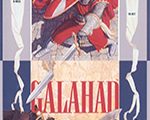
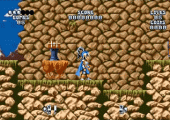
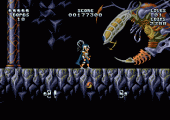
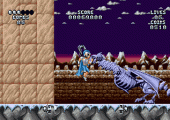
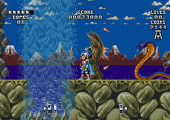
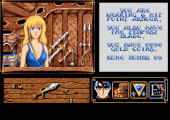
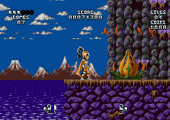
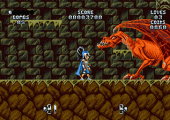
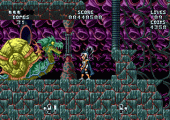
Recent Comments